
One topic dominated conversations in Japan this year, and now it’s officially the most significant single kanji character of the past 12 months.
December always brings with it a few end-of-the-year retrospectives, and one of the most unique is Japan’s Kanji of the Year. Administered by the Kyoto-based Japan Kanji Aptitude Testing Foundation, the Kanji of the Year is a single Japanese character chosen by open ballot, and is meant to embody a deep significance for the year as it comes to a close.
The final announcement is always made on December 12, with Seihan Mori, the head abbot of Kyoto’s historical Kiyomizudera Temple, writing the kanji with a giant calligraphy brush while standing on the temple’s iconic balcony.
▼ Mori writing 2019’s Kanji of the Year
2019年を表す #今年の漢字 は「令」
— ニコニコニュース (@nico_nico_news) December 12, 2019
生放送を視聴する↓https://t.co/S8WomGafY9
全216,325票のうち30,427票を獲得。
新天皇即位による新元号決定、法「令」改正による消費増税、芸能界の不祥事などの法「令」遵守の意識、災害による警報発「令」などが理由にあげられました。 #漢字の日 pic.twitter.com/nlDZY369Tl
For 2019, 216,325 votes were cast, and when tallied the kanji of the year is 令, pronounced rei.
In most instances, rei means “order” (in the sense of orderly control), but in somewhat obscure contexts it can also mean “beautiful.” A reminder of this alternate meaning came last spring, when Reiwa, written in kanji as 令和, was chosen as the name of Japan’s new imperial era, which began with Emperor Naruhito’s ascension to the throne on May 1, and the Japanese government clarified that the intended meaning of Reiwa is “beautiful harmony” (though that translation has a unique problem of its own).
令/rei received 30,427, or roughly 14 percent, of the Kanji of the Year votes. While that’s nowhere near a majority, it’s still an impressive amount of support for any single character, considering that the Japanese language has more than 2,100 regular-use kanji. It was followed in the voting by second-place 新/shin, meaning “new,” and third-place 和/wa, which means “harmony” and is the second kanji in Reiwa.
Since 2019 marked the first change in imperial era since 1989, the selection of 令/rei isn’t much of a surprise. It does, however, reflect a happier mindset than the Kanji of the Year in 2018 (“disaster”), 2017 (“north,” in reference to North Korean missile launches) and 2014 (“tax,” the result of an unpopular sales tax increase that year). Hopefully 令和/rei will end up being not just a reminder of what happened in 2019, but also a sign that more beautiful things are coming in 2020.
Sources: Livedoor News/Oricon News via Jin, Japan Kanji Aptitude Testing Foundation
Images ©SoraNews24
● Want to hear about SoraNews24’s latest articles as soon as they’re published? Follow us on Facebook and Twitter!

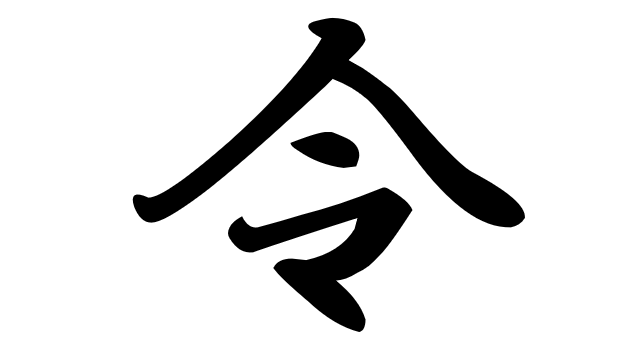
 Japan’s Kanji of the Year revealed, reflects both the good and the bad of 2022
Japan’s Kanji of the Year revealed, reflects both the good and the bad of 2022 “Disaster”: 2018 Kanji of the Year unveiled by Buddhist monk at Kiyomizudera temple in Kyoto
“Disaster”: 2018 Kanji of the Year unveiled by Buddhist monk at Kiyomizudera temple in Kyoto Japan’s kanji character of the year for 2017 is “north”
Japan’s kanji character of the year for 2017 is “north” Japan announces new era name, Reiwa, but what does it mean and why was it chosen?
Japan announces new era name, Reiwa, but what does it mean and why was it chosen? Twitter users say Japanese Prime Minister’s name is hiding in the kanji for Japan’s new era name
Twitter users say Japanese Prime Minister’s name is hiding in the kanji for Japan’s new era name Japan’s new difficult-to-drink-from beer glass protects your liver, but it’s a brutal experience
Japan’s new difficult-to-drink-from beer glass protects your liver, but it’s a brutal experience New Pokémon ice cream, dessert drinks, and cool merch coming to Baskin-Robbins Japan【Pics】
New Pokémon ice cream, dessert drinks, and cool merch coming to Baskin-Robbins Japan【Pics】 New samurai glasses are Japan’s latest weird must-have souvenir
New samurai glasses are Japan’s latest weird must-have souvenir Demon Slayer: Kimetsu no Yaiba gets new roller coaster attractions and food at Universal Studios Japan
Demon Slayer: Kimetsu no Yaiba gets new roller coaster attractions and food at Universal Studios Japan How to order snacks on a Shinkansen bullet train in Japan
How to order snacks on a Shinkansen bullet train in Japan High-fashion Totoro cuddle purse is like an elegant stroll in the forest【Photos】
High-fashion Totoro cuddle purse is like an elegant stroll in the forest【Photos】 Kyoto Tower mascot termination reveals dark side behind cute Japanese characters
Kyoto Tower mascot termination reveals dark side behind cute Japanese characters Caffeinated ramen for gamers that you can eat with one hand going on sale in Japan
Caffeinated ramen for gamers that you can eat with one hand going on sale in Japan Burger King Japan suddenly adds Dr. Pepper and Dr. Pepper floats to its menu nationwide
Burger King Japan suddenly adds Dr. Pepper and Dr. Pepper floats to its menu nationwide Hello, cosmetics! Clinique teams up with Hello Kitty this summer for first-time collaboration
Hello, cosmetics! Clinique teams up with Hello Kitty this summer for first-time collaboration Nintendo history you can feel – Super NES, N64, and GameCube controllers become capsule toys
Nintendo history you can feel – Super NES, N64, and GameCube controllers become capsule toys “The most Delicious Cup Noodle in history” – Japan’s French Cup Noodle wins our heart【Taste test】
“The most Delicious Cup Noodle in history” – Japan’s French Cup Noodle wins our heart【Taste test】 Starbucks releases a cute Frappuccino and Unicorn Cake…but not in Japan
Starbucks releases a cute Frappuccino and Unicorn Cake…but not in Japan McDonald’s Japan’s Soft Twist Tower: A phantom ice cream only sold at select branches
McDonald’s Japan’s Soft Twist Tower: A phantom ice cream only sold at select branches Yabai Ramen: What makes this Japanese ramen so dangerous?
Yabai Ramen: What makes this Japanese ramen so dangerous? Finally! Nintendo Japan expands Switch 8-bit controller sales to everybody, Online member or not
Finally! Nintendo Japan expands Switch 8-bit controller sales to everybody, Online member or not Japanese government wants to build luxury resorts in all national parks for foreign tourists
Japanese government wants to build luxury resorts in all national parks for foreign tourists To combat declining birth rate, Japan to begin offering “Breeding Visas” to foreigners
To combat declining birth rate, Japan to begin offering “Breeding Visas” to foreigners 10 things you should buy at 7-Eleven in Japan
10 things you should buy at 7-Eleven in Japan Studio Ghibli releases anime heroine cosplay dresses that are super comfy to wear
Studio Ghibli releases anime heroine cosplay dresses that are super comfy to wear Woman charged for driving suitcase without a license in Osaka
Woman charged for driving suitcase without a license in Osaka Studio Ghibli unveils My Neighbour Totoro miniature house model
Studio Ghibli unveils My Neighbour Totoro miniature house model Kyoto experiencing problems with foreign tourists not paying for bus fares, but not on purpose
Kyoto experiencing problems with foreign tourists not paying for bus fares, but not on purpose Fighting mild hunger with a Japanese soda that turns into jelly in the stomach【Taste test】
Fighting mild hunger with a Japanese soda that turns into jelly in the stomach【Taste test】 Studio Ghibli’s Howl’s Moving Castle tapestry unveiled in Japan for first time
Studio Ghibli’s Howl’s Moving Castle tapestry unveiled in Japan for first time McDonald’s new Happy Meals offer up cute and practical Sanrio lifestyle goods
McDonald’s new Happy Meals offer up cute and practical Sanrio lifestyle goods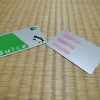 Sales of Japan’s most convenient train ticket/shopping payment cards suspended indefinitely
Sales of Japan’s most convenient train ticket/shopping payment cards suspended indefinitely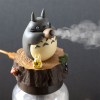 Sold-out Studio Ghibli desktop humidifiers are back so Totoro can help you through the dry season
Sold-out Studio Ghibli desktop humidifiers are back so Totoro can help you through the dry season Japanese government to make first change to romanization spelling rules since the 1950s
Japanese government to make first change to romanization spelling rules since the 1950s Foreigner’s request for help in Tokyo makes us sad for the state of society
Foreigner’s request for help in Tokyo makes us sad for the state of society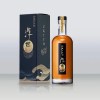 Ghibli founders Toshio Suzuki and Hayao Miyazaki contribute to Japanese whisky Totoro label design
Ghibli founders Toshio Suzuki and Hayao Miyazaki contribute to Japanese whisky Totoro label design Doraemon found buried at sea as scene from 1993 anime becomes real life【Photos】
Doraemon found buried at sea as scene from 1993 anime becomes real life【Photos】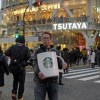 Tokyo’s most famous Starbucks is closed
Tokyo’s most famous Starbucks is closed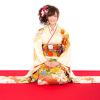 Princesses, fruits, and blacksmiths: Study reveals the 30 most unusual family names in Japan
Princesses, fruits, and blacksmiths: Study reveals the 30 most unusual family names in Japan “Gold” named 2016 Kanji of the Year
“Gold” named 2016 Kanji of the Year Four new era names the Japanese government rejected before deciding on Reiwa
Four new era names the Japanese government rejected before deciding on Reiwa Renowned Japanese calligraphy teacher ranks the top 10 kanji that foreigners like
Renowned Japanese calligraphy teacher ranks the top 10 kanji that foreigners like “Safety” voted Japan’s official kanji of 2015
“Safety” voted Japan’s official kanji of 2015 Foreigners misreading Japanese kanji of “two men one woman” is too pure for Japanese Internet
Foreigners misreading Japanese kanji of “two men one woman” is too pure for Japanese Internet How do you say “Happy New Era” in Japanese?
How do you say “Happy New Era” in Japanese? How to convert the Western calendar to Japanese Reiwa years
How to convert the Western calendar to Japanese Reiwa years Foreigners in Japan vote for the best-looking katakana character
Foreigners in Japan vote for the best-looking katakana character U.S. college student learns the hard way to get your Japanese kanji tattoo checked by an expert
U.S. college student learns the hard way to get your Japanese kanji tattoo checked by an expert Kanji fail — Japanese parents shocked to learn their baby girl’s name has inappropriate meaning
Kanji fail — Japanese parents shocked to learn their baby girl’s name has inappropriate meaning The 10 most attractive Japanese women’s names, as chosen by dating app users
The 10 most attractive Japanese women’s names, as chosen by dating app users Christian groups in Japan criticize emperor’s ascension ceremony as violation of constitution
Christian groups in Japan criticize emperor’s ascension ceremony as violation of constitution W.T.F. Japan: Top 5 most difficult kanji ever【Weird Top Five】
W.T.F. Japan: Top 5 most difficult kanji ever【Weird Top Five】 Japanese police ask drunk people to please stop sleeping in the middle of the street
Japanese police ask drunk people to please stop sleeping in the middle of the street
Leave a Reply